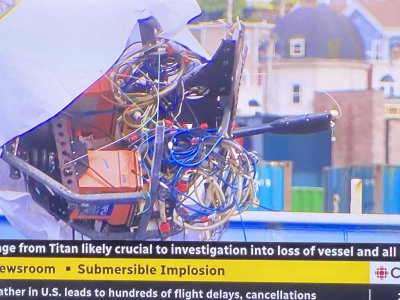That’s the description I heard as well about what happens during an implosion. As gruesome as that is, when it’s your time, that might be the best way to go.
I just saw that some wreckage has arrived in St. Johns, so hopefully they will at least be able to do an analysis on this failure to determine how it failed so that at least something can be learned for anyone else thinking of ignoring sound advice.
I just saw that some wreckage has arrived in St. Johns, so hopefully they will at least be able to do an analysis on this failure to determine how it failed so that at least something can be learned for anyone else thinking of ignoring sound advice.










